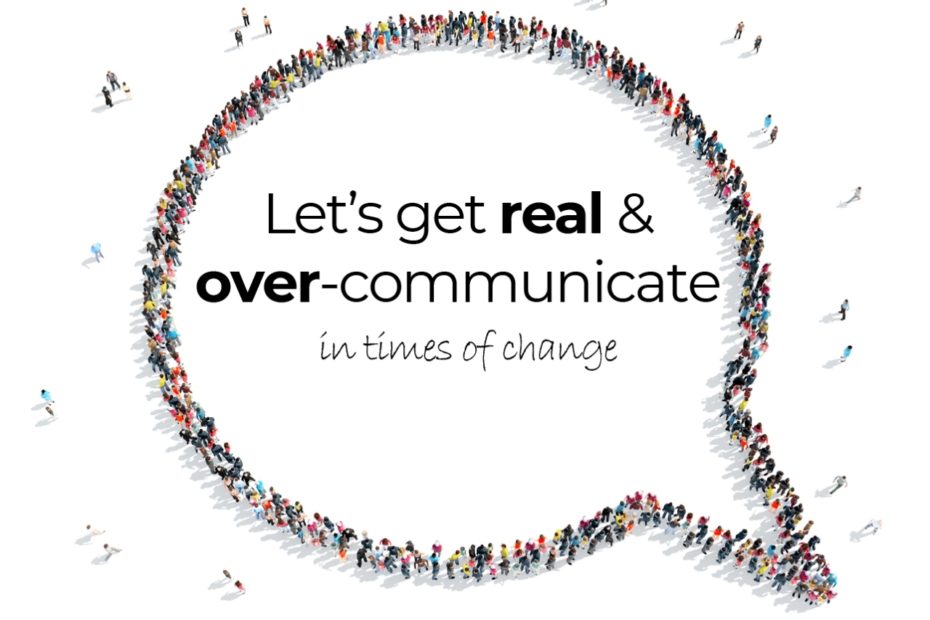In my last article, I have already talked about the “REAL” in a leader’s behaviour. I wrote about authenticity and vulnerability, connection and closeness. I also talked about the inner relieve to acknowledge and show one’s own feelings in certain situations.
Authentic leadership communication is especially important in times of uncertainty, crises or change. As a manager regardless of the hierarchical level – you would like to show strength and support, particularly in the aforementioned situations. However, leaders are not invincible humans with superpowers, but fortunately vulnerable people like you and me.((Miteinander Reden: Kommunikationspsychologie für Führungskräfte, Schulz von Thun)) Most of the time, we perceive managers, who confidently deal with their weaknesses and admit their own vulnerabilities, as credible and competent.
Authentic leadership communication – an example
A wonderful example for authentic and credible leadership communication is the speech by Arne Sorenson, CEO of Marriott. The video shows how Sorenson deals with the difficult Covid-19 situation in the hotel industry and how he addresses his employees – all while undergoing chemotherapy:
Sorenson shows his REAL self. He shows himself human and imperfect. My hypothesis is that his honest, transparent and open internal communication highly impacted all employees. As CEO he does not make himself scarce in these hard times. He shows transparency, builds trust and thus becomes more tangible and approachable. Presumably, this was not the only internal communication measure that Sorenson or his corporate communications team has directed at the global Marriott team. And that is a good thing!
Regardless of the communication during the Corona crisis, as the example of Marriott shows, I am convinced:
In times of turbulence and insecurity, authenticity, transparency and the willingness to over-communicate is important. It is about including employees and giving them guidanceThe latter works even when the details of the expected change are not completely clear.
Many managers are afraid to start communicating when the situation is not yet clear at all levels. However, at this point, rumours are already spreading around the office! In order to prevent energy-draining rumours and speculation, the leadership team should at least give clarity about the further process. This is what creates orientation:
- What happens next?
- What are the next steps regarding communications?
- Who is involved? When, where, how?
- etc.
It is important to always give room for employee questions and to give honest answers when it comes to the questions: What is certain? And what is uncertain? However, the following principle should always be kept in mind: Don’t promise what you can’t deliver!
In this way, leadership communication remains credible. Regardless if the transformation phase is large or small, employees will have the chance to mentally prepare themselves. At the same time, on a personal level, trust and closeness are promoted since fears and uncertainties in the team are taken seriously and people feel heard.
Developing a common language
Moreover, in the case of large-scale, company-wide change processes, it is not only important to coordinate change communication, but also to ensure constructive interaction between business leaders and the people who shape and influence employee communication on a daily basis. This is where corporate communications comes into play, as well as HR and the management team, who – whenever possible and feasible – should be involved and knowledgeable about the process.
It’s the continuous integration of the leadership team that helps to develop a common organisational language. This approach is not only appreciative and motivating for managers, it also gives them security and direction. After all, they are the ones who have regular updates with the employees at the operational level.
Furthermore, uncoordinated or inconsistent messages to the team can be avoided with the early involvement of managers in change communication. Untuned communication would only cause annoyance, incredibility and demotivation amongst employees. It also supports the spread of rumours and hinders regular business operations and – most importantly – the focus on the customer!
Conclusion
Authentic and consistent communication in times of change does not mean overwhelming your team with empty words! It is about involving managers AND employees in the best possible way, at the right time, addressing employee fears and uncertainties. In my experience, it is worth going the “extra mile” and making a clear change communication plan.
Curious?
I look forward to questions, feedback or comments about this topic! As a communication expert, I am also happy to support your company in the development of authentic and effective change and leadership communication.
Bildquellen:
- Lets get real and over-communicate: © tai11 / Depositphotos
Teilen:


